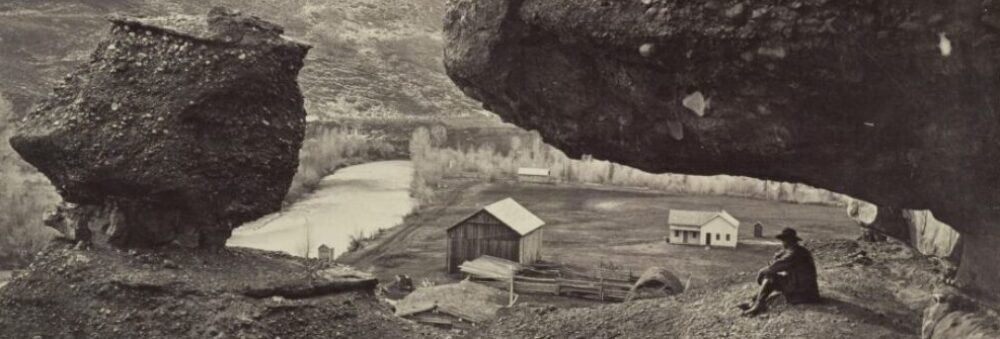
In the history of the theater there are no productions so nearly incredible as the panoramas of the Mississippi. Five times within the 1840’s the Father of Waters sat—or kept rolling along—for his portrait. Five times artists made lengthy, laborious, and expensive trips sketching river scenery and then spent weeks and months transferring those sketches to canvas. (McDermott, 17)
Painted “panoramas in motion,” a popular touring entertainment in the 19th century, presented a perfect medium in which to capture the expanse of the Western landscape, and in 1846, John Banvard captured the imagination of Boston with an exhibition of his Panorama of the Mississippi River, self-proclaimed as “the largest picture ever executed by man” with its “painted three miles of canvas … exhibiting a view of country 1200 miles in length.” The success of Banvard’s exhibition, which left “the enterprising artist … reaping a golden harvest,” was soon followed by four competing panoramas of the Mississippi River by John Rowson Smith, Samuel B. Stockwell, Henry Lewis, and Leon D. Pomarède. Regretfully, none of these panoramas exist today.
The Western Americana collection holds a printed broadside announcing the exhibition of Professor M. W. Dickson’s and J. J. Egan’s Monumental Grandeur of the Mississippi Valley!, “a gorgeous panorama” that covers “over 15,000 feet of canvas.” The broadside was printed in Newark, NJ, circa 1851. Unlike the five earlier panoramas of the 1840s, however, John J. Egan’s original canvas panorama still survives.
In the summer of 2011, the Saint Louis Art Museum embarked “on an ambitious conservation project to save a historic treasure of local significance, the only surviving panorama of the Mississippi River.” A team of conservators restored the surviving 348-foot long painting in the museum’s main exhibition gallery, giving visitors an opportunity to view the painting and witness its restoration. For an interview with Paul Haner, SLAM’s painting conservator, see “Navigating the West.” Images of the of the 25-scene panorama can also be viewed online in the Saint Louis Art Museum Collections, Monumental Grandeur of the Mississippi Valley.
Bibliography:
Description of Banvard’s Panorama of the Mississippi River, Painted on Three Miles of Canvas: Exhibiting a View of Country 1200 Miles in Length, Extending from the Mouth of the Mississippi River to the City of New Orleans…. Boston: John Putnam, 1847. Internet Archive.
McDermott, John Francis. The Lost Panoramas of the Mississippi. Chicago: University of Chicago Press, 1958.
Sandweiss, Martha A. “Of Instruction for Their Faithfulness” in Print the Legend: Photography and the American West (New Haven: Yale University Press, 2002), 47-86.
Saint Louis Art Museum. Restoring an American Treasure: The Panorama of the Monumental Grandeur of the Mississippi Valley.
